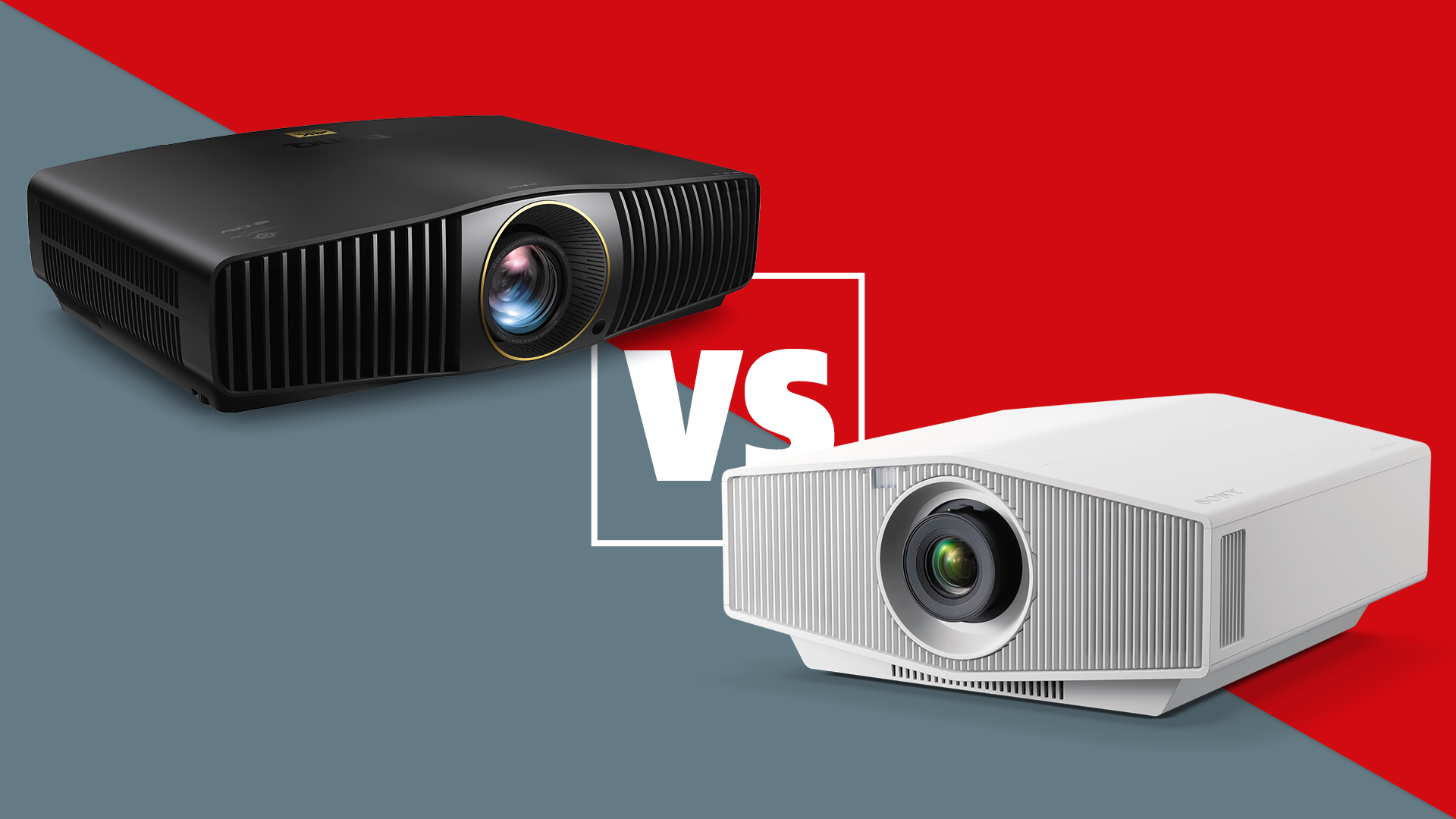Here's what's next for 4K HDR streaming content on the BBC
The BBC talks 4K HDR plans, from TV compatibility to streaming developments and future content trials
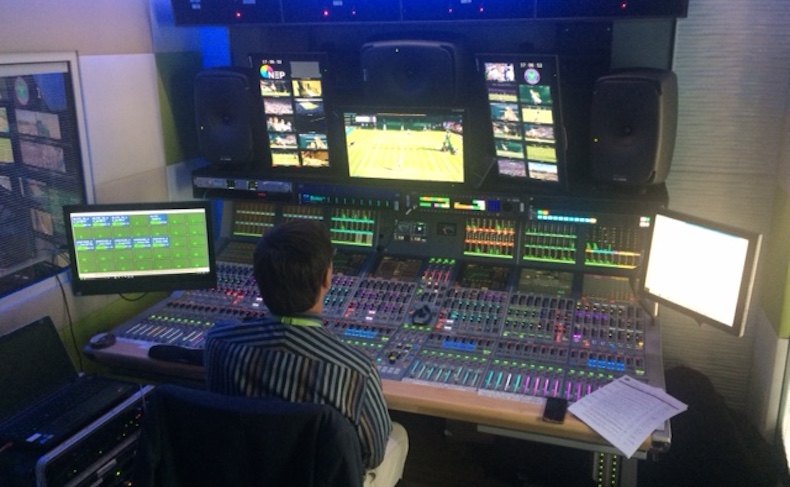
4K TVs may have been around as long as internet memes, but a live 4K broadcast is still comparatively novel. While UK pay-TV providers – Sky, BT and Eurosport – have been in the game for a few years now, broadcasting the likes of Premier League matches, MotoGP, Formula 1, Aviva Premiership rugby and tennis between them via satellite, it was only last summer that the BBC began offering live free-to-air content in 4K and HLG HDR.
Following its 4K iPlayer Planet Earth II and Blue Planet II on-demand trials in 2016 and 2017, the BBC has, in that time, live streamed the 2018 and 2019 FA Cup Final, a rugby fixture, the 2018 Wimbledon tennis championships and the FIFA 2018 World Cup on its internet iPlayer platform. It also worked with Sky in the broadcasting of last year's Royal Wedding in 4K.
These have all been trials. And as Phil Layton (head of broadcast and connected systems in BBC’s R&D) is keen to reiterate, this has been – and still is – a learning process. “This is a full end-to-end trial. We’re still learning about UHD production and how you make good HDR pictures. Each UHD HDR event has different workflows,” he said.
So how successful have they been? What have they learnt so far? And what stumbling blocks need to be overcome to secure the BBC’s live 4K future?
Number-crunching success
In the lead up to the World Cup, the BBC promised ‘tens of thousands’ of viewers would be able to access each UHD stream on a first-come, first-served basis - and it delivered. According to the BBC’s hot-off-the-press stats (which you can see in more detail here) the peak audience was 60,300 on 7th July, for the Sweden vs England quarter-final and day six of Wimbledon combined.
Of course, the future of BBC’s 4K trials will be determined by ongoing feedback and, whether you ask the BBC yourself or scroll back through Twitter, you’ll see the iPlayer-hosted broadcasts have received some generally positive feedback - most notably for the quality of the picture. We were certainly impressed with its obvious superiority over the HD broadcast. However, the bag of reviews was inevitably mixed, with some viewers experiencing some teething issues…
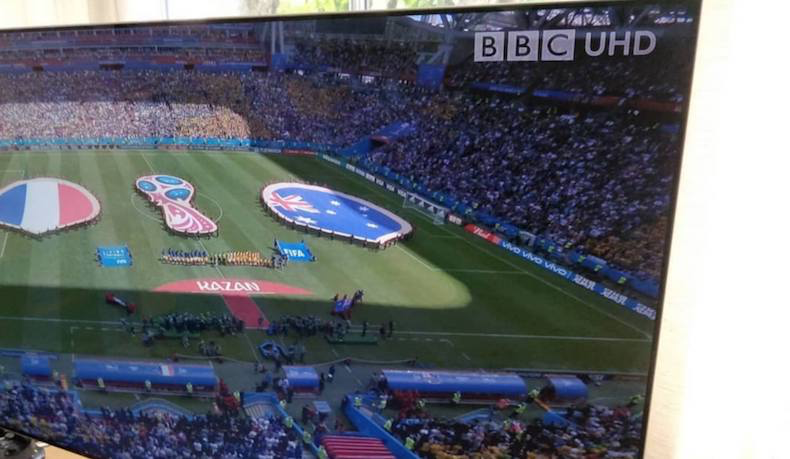
Latency
One of those was around delays and buffering - and it’s something the BBC was not only well aware of but making on-the-go fixes to smoothen out.
The latest hi-fi, home cinema and tech news, reviews, buying advice and deals, direct to your inbox.
“The biggest change we made was in the delay. Latency comes from the streaming side - it’s in the stream technologies that we use [on iPlayer]. You have four-second [content] segments travelling around the networks and they buffer in various places and processes,” Phil explains.
“We made some small changes in the second week of the World Cup and took 20 seconds out of the chain, so we got down to about 45 seconds at one point. As we’d not done this before on this scale, we started off conservatively when we set our chain up to make sure it was securely delivering the segments in a specific time. As we did some optimisations, we realised we could take some delay out.
“The internet behaves differently the bigger the audiences, so the problems you don’t see in early stages only appear in bigger events. And it’s often hard to trace down where they’re coming from. We want to learn from that and help manufacturers understand how their algorithms work better for dealing with it.
“[Streaming latency] is a recognised industry-wide problem, and we need to look at a solution for getting streaming as low-latency as broadcast. We want streaming to be as good as broadcast. We’re working on it.”
MORE: BBC's 4K iPlayer coverage gets mixed reviews
Improving encoding
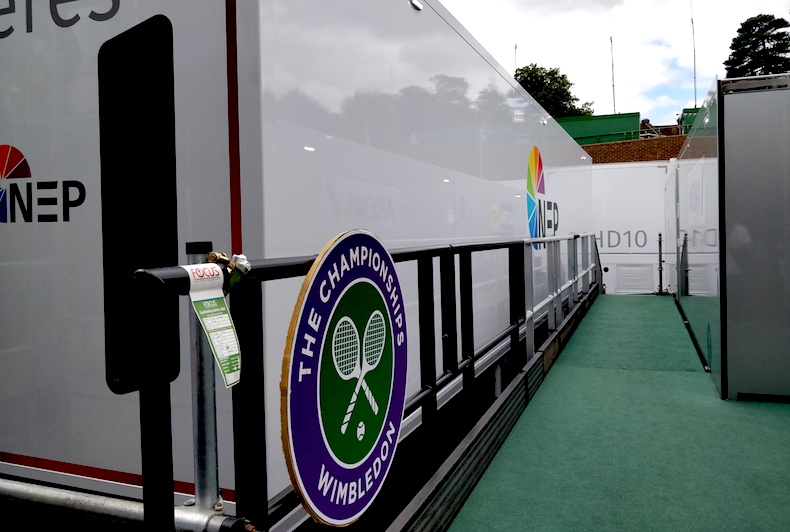
The BBC was running an adaptive bitrate streaming system, which meant a full-fat 3840 resolution was available to those with internet speeds of at least 36-40Mbps, with 2560, 1080 or 720 resolutions also available for those with slower speeds.
But it seemed most could handle the two ‘4K’ resolutions…
Layton said: “Only about 10% [of streamers] were on the two lower presentations, so the rest was getting 3840 or 2560. The idea of adaptive bitrate is to try and deal with congestion on the network, so it’s for the receivers to decide how they deal with the segments, to decide how many segments they’re going to buffer. Manufacturers all have different algorithms - some TVs buffer a lot, giving them more leeway when the network congests, others want to have shorter delay so they buffer less and drop down [to the lower resolution]. It’s the manufacturer’s choice to pick the best one.”
But is the BBC’s bitrate demand for live content likely to change, considering on-demand streamed 4K content, such as Blue Planet II, requires only 22mbps? “We’d like to get down to that for live. It would create a massive increase in reach and there’d be less traffic going around the internet.”
But, sadly, encoding for live 4K broadcast content isn’t the same as encoding on-demand video. “People say ‘I can watch Netflix on-demand, but I can't watch BBC live’ - but it’s comparing chalk and cheese,” says Layton.
“HEVC encoding [the BBC’s encoding tool]… is the only game in town at the moment, but it takes a lot of computational power. It isn’t a mature technology for live encoding. There are newer encoding tools that will offer low bitrates, but they come with higher compression times.
“We don’t distribute the content directly, we use commercial CDNs and they only have a limited amount of server capacity. There are new technologies we maybe need to look at deploying. Coding improvements would drop the capacity and would drive the [bitrate] numbers down.”
Advanced compression appears to be an important development, then. But, as stated on a BBC blog post, the BBC is hopeful ‘higher compression efficiency can be achieved and will likely be available as part of a future video-coding standard in the longer term’.
Manufacturer support
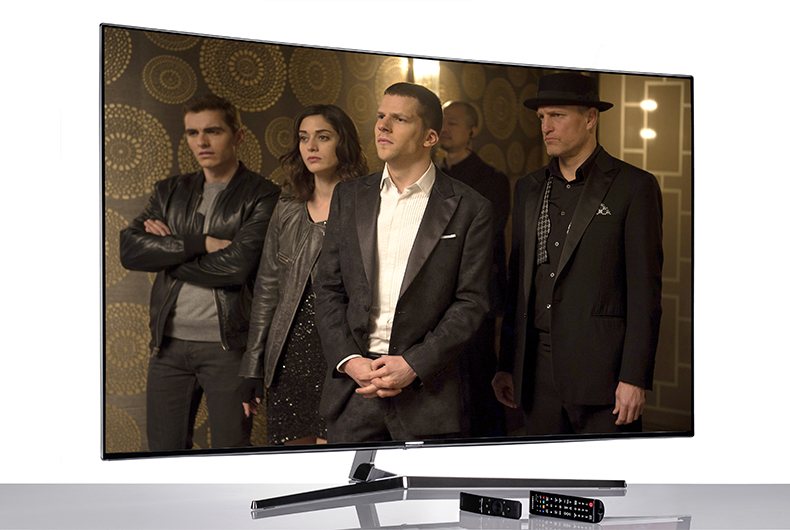
Another trending topic has been hardware support for UHD streams - and, notably, the lack of it on Samsung's 2016 4K HLG-compatible TVs.
Samsung defended the situation with the following official response: “All of Samsung’s 2016 HDR TVs support HLG Broadcast technology (firmware update required). BBC UHD iPlayer however relies on a mixture of technologies, not just HLG, to enable its streaming of UHD content. Samsung has no plans to support BBC UHD iPlayer on its 2016 UHD TV Range.”
While the BBC couldn’t comment specifically on the Samsung situation, Layton did say this: “iPlayer needed very little modification to do UHD. All iPlayer does is play back the video object it’s given to play. The television is responsible for the decoding, for receiving the segments, and for picking the right ones according to the bitrate for the network. In terms of televisions, we don’t have anything specific in iPlayer, it simply relies on HbbTV and DVB underlying standards… those standards include DVB-DASH, it’s nothing BBC-specific.
“If a TV supports those, it works. There aren’t specific changes for UHD playback in iPlayer. Because it’s HLG and backwards-compatible, our criteria was: if a TV accepts a BT.2020 signal and plays it back without interruption without buffering, we’d enable that device. What we don’t want is HLG on a 709 display because we don’t want it to look wrong.
“It’s up to manufacturers to choose how they support it, but we wanted our content on as wide a range of devices as possible, we didn’t want to limit it.”
MORE: 6 keys facts about BBC's 4K iPlayer World Cup broadcasts
Refining the process
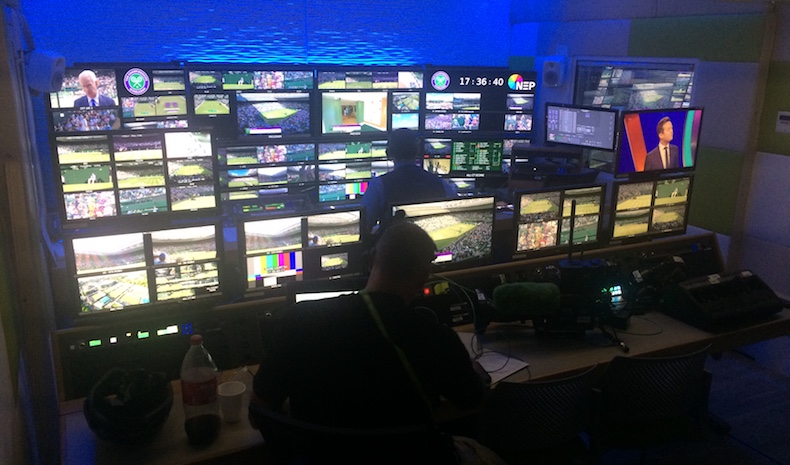
As well as coding improvements, the BBC also wanted to see the workflow advance in other areas.
For Wimbledon, the 4K signal was sent up to the BT room, encoded in HEVC and then sent back over the BT network to the BBC’s New Brodcasting House in central London, where it was picked up onto its matrix and fed into the encoders it’s using for iPlayer.
But before all that, there are processes to prepare the 4K signal. The camera feeds (from more than six 4K cameras on Centre Court) come into the UHD truck, where they’re checked and manually enhanced on a shot-by-shot basis using a MSU (Master Set Up Unit). The unit can make adjustments – effectively ‘offsets’ – to the HDR image, in terms of exposure, contrast, colour and so on.
A person is needed to apply those changes to maximize the picture. If you only have a given offset for gain or blacks, it’s only applying an average to an average scene - without considering, for example, zoom lenses and variable light.
Then, that all happened for both the SDR HD and HDR UHD signals in two workflows. “People are racking [i.e. shading] the cameras in SDR, then they’re being converted into HDR. We’d like it to be the other way round,” says Simon Thompson (project R&D engineer).
“In the long term, we want to go to a full HDR workflow [where you can grab the BT.2020 colour space and the dynamic range] and just take a down conversion off the HDR rather than working in dual mode in the truck - but that’s not possible for the moment,” Thompson continues.
2019 progress
That method was practiced in Sky’s Royal Wedding production - 1.6 billion people watched the world feed (in SDR, BT.709), which was automatically down-converted from the HDR production.
And in May 2019, that more efficient workflow was realised by the BBC’s R&D department, in collaboration with Outside Broadcast truck firm Arena Television, for the FA Cup Final. A HD SDR broadcast was obtained from a main 4K HDR master feed.
Andrew Cotton, principal technologist within BBC R&D's Broadcast & Connected Systems Section, said: “We’ve got to protect the HD SDR viewers because there are the most eyeballs in front of those screens.”
“But clearly we want to deliver a great UHD HDR experience for those watching that signal as well. Most UHD cameras have both an HDR and an SDR output and those two outputs have been effectively been passed through parallel production workflows. It has worked but it’s an extremely complicated and costly workflow because you need twice as much equipment and timing up the different signals is more complicated. It’s a complete nightmare.
“For this to take off at scale we need to have a single production workflow and we need to be able to generate an HD-SDR output from a primary UHD-HDR signal. We now feel that we’ve reached that stage.”

On with iPlayer...
The other question is: will the BBC keep its live 4K ambitions strictly within iPlayer? The BBC making its live broadcast available on Sky Q, via the red button, led some (including us) to wonder whether ‘red button’ broadcast distribution is an end goal. But it appears not.
“The streaming approach is what we’re working on. Sky Q doesn’t support iPlayer – that’s not their method – so if we want to do a trial with them, that’s how we have to do it,” explains Layton.
“From a distribution viewpoint, we’re looking beyond broadcast… we have to drive the internet forward, try and shape it.”
From a trial to a service
And of course, the natural progression from a trial is, if successful, often a service.
Layton continues: “we want to see how successful it is, what our viewer feedback is, how the workflow and costs work out. Part of the trial is to leave the BBC with an ongoing UHD capability - we’ll look to sports still, events as well. It’s for the production team to know it’s available. We have provided a chain, which I think has a life of a year-to-18 months for us to do more trials. We haven’t done this as a one-off, but it’s still a trial. If [BBC] sport came to us, we can do another event. We have to do more to make it business as usual, but we’re on that journey. We’ve left the capability.”
So what's next?
With the BBC now having nailed a cheaper, more time-efficient way of working, trials should, in theory at least, be as conceivable as ever. Naturally, our greedy selves would like a regular influx of 4K HDR streams, as well more ubiquitous device support.
"The big events will drive this. The workflows and technology - these things only get worked out on big events. You have to do it for real. We’ve been lucky this year [2018], we’ve taken big steps forward in workflows. We have to keep doing it,” says Layton.
The BBC isn't tending to lift the lid on trial plans until a few weeks before the event, but we can be confident a ‘big event’ in the near future will feed the next trial.
So, bets in - will it be Glastonbury next year? Or the 2019 Women’s World Cup? The 2020 Summer Olympics and/or Euro 2020, perhaps? Fingers crossed we'll be salivating over every seed on Wimbledon's strawberries again come July, too.
The BBC also revealed it will run some High Frame Rate trials, at 120 frames per second (Wimbledon streams were 50fps).
And then there's the other half of the TV-watching side to consider... “We have to look at sound. We ran out of time here. Most of the issues we found were not at our end, they were with the receivers. We didn’t have time to work through with receiver manufacturers. We’d like to be offering 5.1, we’d like to be thinking about next-gen audio. Using some complex functionality in people’s televisions, which is part of delivering the service,” says Layton.
Perhaps we’ll see these wishes first fulfilled with on-demand content…
“We probably have to go back and look to do on-demand again. Blue Planet II was encoded by my team, but it’s not right to have an R&D team keep running the encoding process, we have to give the BBC [production teams] more of that capability.”
One day, 4K HDR broadcasts will be routinely delivered over 5G, and we'll all remember the journey it took to get there...
MORE: BBC iPlayer review

Becky is a hi-fi, AV and technology journalist, formerly the Managing Editor at What Hi-Fi? and Editor of Australian Hi-Fi and Audio Esoterica magazines. With over twelve years of journalism experience in the hi-fi industry, she has reviewed all manner of audio gear, from budget amplifiers to high-end speakers, and particularly specialises in headphones and head-fi devices.
In her spare time, Becky can often be found running, watching Liverpool FC and horror movies, and hunting for gluten-free cake.
